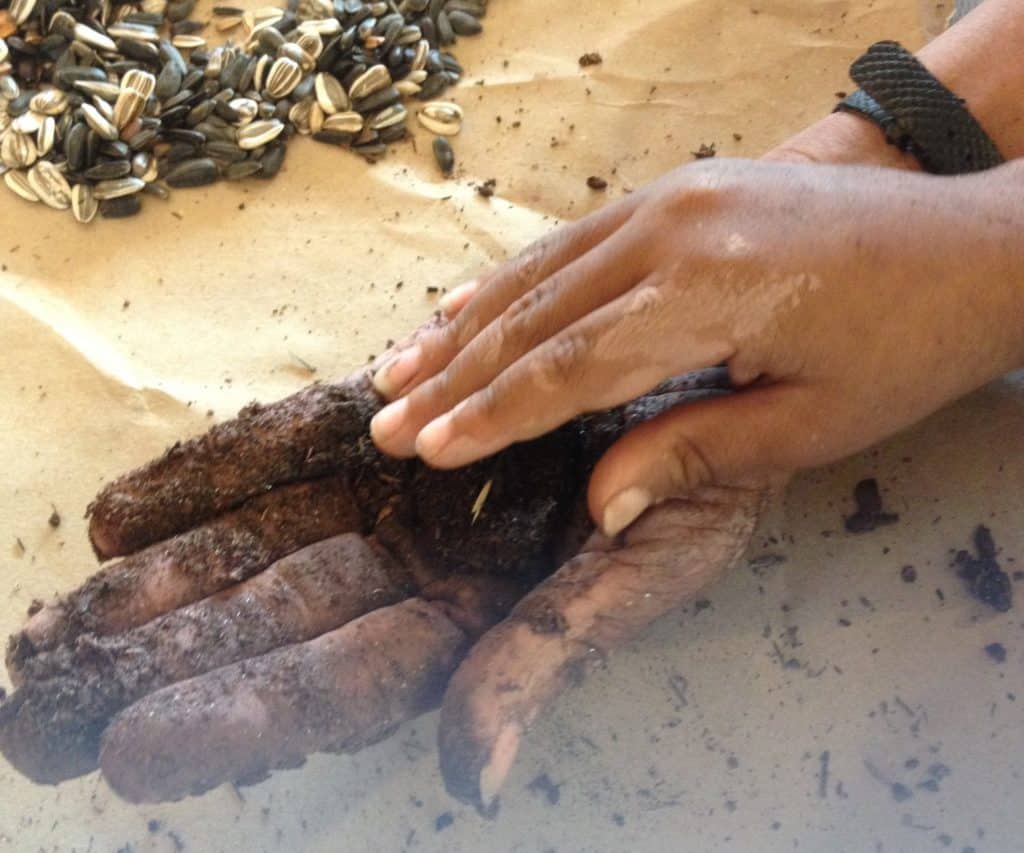As you walk through your neighborhood, you might see bare patches of dirt next to the sidewalk or an empty lot. Those spots are just waiting for something good to grow on them. Seed bombas are a fun way to plant something beautiful without too much fuss. Clay powder, compost or potting soil, seeds, and a little water are all you need for basic bombas.
Ready to get messy and grow? Here we go!
Set-up:
- An apron (or clothes you don’t mind getting stained)
- A mixing bowl and a well-ventilated area (or a ziploc bag to mix in)
- Measuring cups and measuring spoons
- Newspaper or kraft paper to protect your work surface
- Optional: plastic or gardening gloves to keep your hands clean
Ingredients:
- Potting soil or compost, sifted (or pick out larger pieces and rocks by hand)
- Red clay powder
- A little water
- Seeds
- Optional: Crushed mica or biodegradable glitter for an extra bit of sparkle
How to Make Eastie Seed Bombas
Add 2 cups of organic potting soil to ½ cup of clay powder. Then add about ¼ cup of water. Depending on what kind of soil or compost you use, you may need to use less water, or add a little extra. Try adding 1 Tbsp. at a time and seeing how your mixture comes along. Bombas should stick together without being either goopy or crumbly. You can experiment with your ratios of clay, soil, and water to see how they change your seed bombas.
Grab a bit of your mixture and roll it in a ball. Then make an indentation with your thumb if you’re making a bigger bomba for big seeds, or with a pencil eraser if you’re making a mini bomba for little seeds. Pop one large seed or a few small seeds in the middle and roll it back into a ball. Sprinkle mica or biodegradable glitter for an extra sparkle.
Allow your bombas to harden in a dry, sunny place before throwing them.
This article is by guest contributor Jazmin L. Idakaar, the Programs & Community Outreach Librarian at the East Boston Branch of the Boston Public Library.





